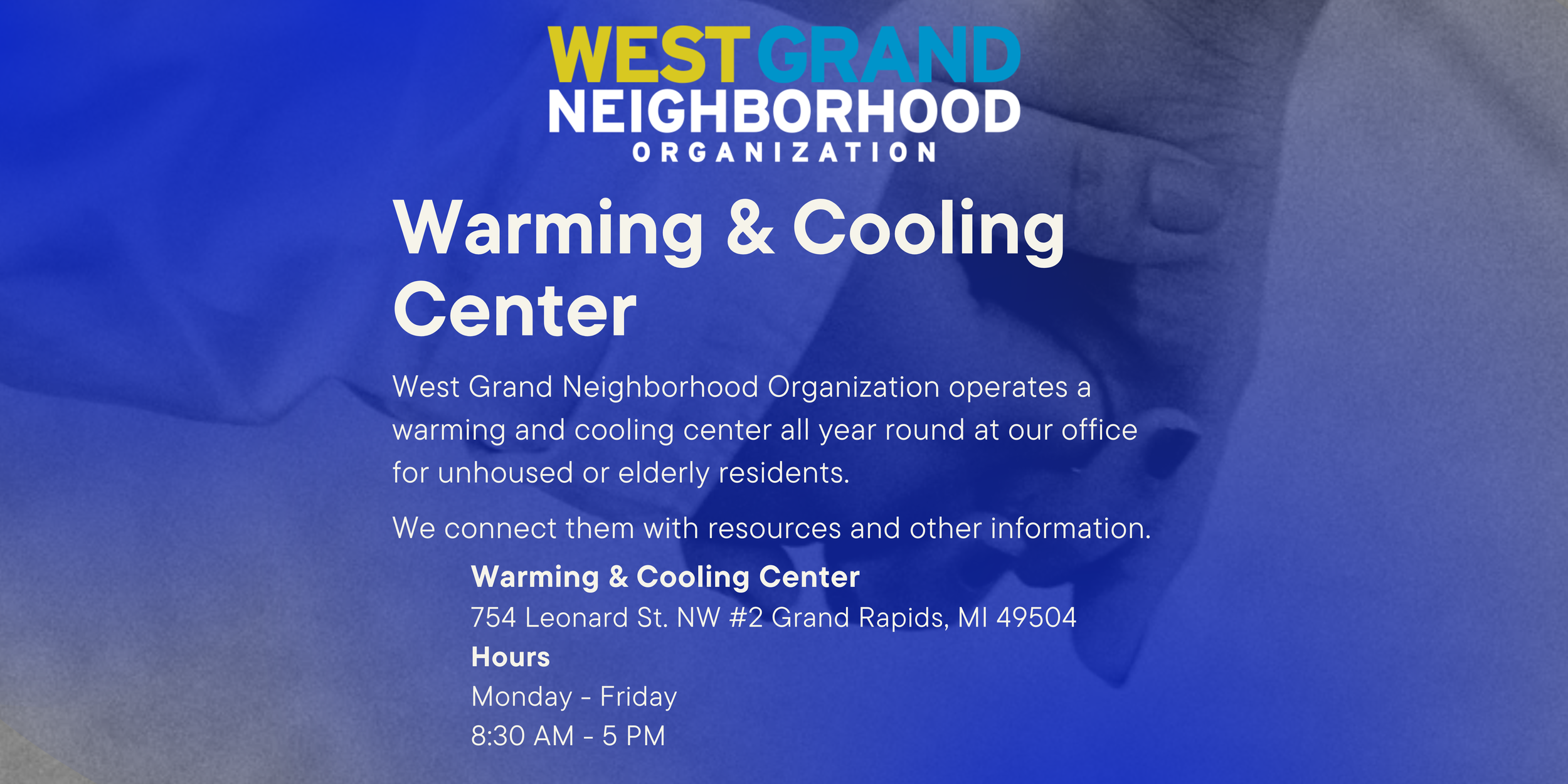Unhoused Resources
Are you at risk of being unhoused?
Do you know someone who is unhoused and needs resources?
Below we have some information and frequently asked questions about housing.
West Grand Neighborhood Organization has a variety of Information for those that are experiencing difficulties with housing.
We keep a wide variety of information on hand in order to help neighbors with the processes involved in acquiring housing.
Frequently Asked Questions About Housing
Pine Avenue Apartments is an affordable housing project in our neighborhood built with Low Income Tax Credits (LIHTC). See frequently asked questions to learn more!
-
Currently there are wait lists for most Affordable or Low Income housing developments. There aren't enough of these in the city to house the amount of people that need them.
It is a very complicated issue and several factors determine what makes certain housing affordable.
-
Affordable Housing in Kent County is determined by the Kent County Average Median Income (AMI). In 2022 the Average Median Income of Kent County, MI was: $76,923.
While most neighborhoods in the City of Grand Rapids Average Median Income is significantly lower than the Kent County AMI. For instance: The West Grand Neighborhood has an Average Median Income of $39,444-$53,176 (Census tract 7: $39,444, 8: $42,222, 15: $44,451 and 16: $53,176 based on data from 2022).
So when you hear that a housing development is 30%-80% AMI it is based on the Kent County number (AMI), not the neighborhood or census tract the housing is in.
-
Because housing development is expensive and the mechanisms to incentivize housing developers to build affordable housing is very limited. One of those methods is:
Low Income Housing Tax Credit (LIHTC) - The application process is only twice a year, has a hefty application process for low income housing developers and only x amount of projects get approved each year. So a developer in Grand Rapids trying to apply for LIHTC is going up against applications from the entire state. There is no guarantee that their project will be picked to get the LIHTC.
This is one of the reasons why there are more market rate developments than low income or affordable housing options.
Learn more about LIHTC: https://www.michigan.gov/mshda/developers/lihtc/lihtc/low-income-housing-tax-credit-lihtc
-
It can take as long as 18 Months, but will vary. It depends on the circumstances of the unhoused individual and the legwork they are willing to do. The biggest hurdle is lack of affordable low income housing. Additionally, waitlists are long, housing resources are limited and many people are in need.
There are many hurdles for the unhoused. This can include:
Lack of address.
Lack of computer access (a lot of homeless and low income resources require email/online applications to be done).
Missing vital records and information needed to apply for resources (they tend to get lost or damaged by weather)
Lack of ongoing case management. A lot of unhoused individuals need someone that can help them with the process and recertifications that need to be done on a regular basis.
Lack of emergency family housing. Families with children can sometimes be asked to separate to be able to be in emergency shelters.
There are more hurdles than what is listed above but these are the ones we tend to see the most.
-
A review of literature by the Urban Studies Program at San Francisco State University shows that 13/14 studies that examined the impact of proximity to affordable housing on property values have found no significant negative effect. Furthermore, research shows that affordable housing, in some cases, can improve property value. HUD’s Low-Income Housing Tax Credits (LIHTC) database showed that producing affordable housing in distressed neighborhoods positively impacts the surrounding area in terms of modest property value gains and increased safety.
A study by Trulia was conducted in 2016 to show the little to no impact affordable housing has on property values. They noted that,
“In the nation’s 20 least affordable markets, our analysis of 3,083 low-income housing projects from 1996 to 2006 found no significant effect on home values located near a low-income housing project, with a few exceptions.”
Source: Metonic.net: Does Affordable housing impact surrounding neighborhoods.
-
Many fears around affordable housing increasing the neighborhood’s crime rates are based on emotional fear rather than factual arguments. Research shows that when affordable units occur in small quantities (typically 50 units or less), there is no impact on neighborhood crime. Additionally, a study by the Minneapolis Center for Urban and Regional Affairs found that the number of calls made to the police significantly declined from properties that converted to affordable housing.
Source: Metonic.net: Does Affordable housing impact surrounding neighborhoods.




